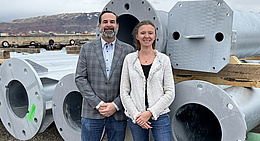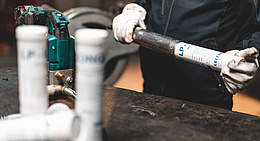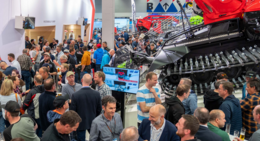Many operators and local authorities are looking for meaningful summer attractions to invest in. One promising development in this respect is the continuing boom in mountain biking, and in many locations various facilities have already been created, from single trails to complete mountain bike parks as dedicated sports grounds for the use of mountain bikers. In most cases the existing winter infrastructure, such as ropeways, is used – with adaptations where necessary – to carry the mountain bikers and their bikes to the top. They can then concentrate entirely on the downhill ride. Downhill riding in mountain bike parks is thus the summer equivalent of downhill skiing in winter: Visitors are carried up the mountain with their gear on a ropeway and can save their energies for the downhill experience. In the last few years several parks have been built in Austria that are now well established and popular with the mountain biking community well beyond the country’s borders, such as Bikepark Planai in Schladming in Styria, Bikepark Leogang in Salzburg, Saalbach-Hinterglemm Bike Circus, also in Salzburg, Bikepark Zau[:ber:]g on the Semmering between Lower Austria and Styria, and Mountainbike Park Wagrein, again in Salzburg, to mention just the biggest. In addition to the downhill trails, many mountain resorts now offer the appropriate facilities for other established styles of mountain biking such as cross-country in open terrain and traditional mountain bike tours.
For those who are new to the subject or want to check out the existing facilities, it makes sense to take a look at the various forms of mountain biking. The following analysis is based on a poll of 327 mountain bikers in the mountain sports regions of the Austrian provinces of Salzburg and Vorarlberg (Leissing 2012).
In areas with lifts and cable cars, we usually find four basic types:
- cross-country riders,
- downhill riders,
- freeriders / enduro riders, and
- touring riders.
The characteristics of the various types
Age is one of the main differences between the various types. In the areas included in the study, almost 85 % of the downhill riders were less than 35 years old, and slightly more than half of all under-25-year-old mountain bikers said they preferred downhill mountain biking. Freeriding and enduro are also the preserve the younger riders, while cross-country attracts slightly older people, and mountain bike tours tend to be the preference of the older riders on average.
As various studies have shown, men are in the majority among the mountain bikers, with a share of 80 %, and downhill and freeriding/enduro are almost exclusively male activities. At just at 35 %, the share of women is highest for mountain bike tours and cross-country.
With an average of 15 to 21 days, downhill riders spend the most time in the mountains in summer, while autumn is dominated by the tour and cross-country riders.
Motives
With all outdoor sports, such as downhill and cross-country skiing, the motives for taking up the sport are always basically the same. They include considerations of health, such as relaxation and getting and keeping fit, as well as social aspects and the attractions of the natural scenery. In the case of mountain bikers, the poll showed that enjoyment of the natural scenery is one the main motives. An attractive and well maintained natural setting and well integrated trails are therefore important, and re-grassing may be required to achieve such goals. But closer analysis also reveals certain differences between the individual groups.
Almost all groups are interested not only in the scenery but above all in recreation and relaxation in the mountains. But whereas touring and cross-country riders tend to stress the outdoor experience and the attractive countryside, downhill riders are looking mainly to improve their skills and enjoy the thrills and a sense of risk and adventure; they particularly appreciate the challenge of a technically demanding trail. For the freeriders and enduro riders, too, the feeling of adventure is a key motive for traveling to the mountains.
The importance of mountain bikers for the tourist industry
As one might expect, the downhill riders are the mountain biking group that makes far the most use of ropeways. In the poll, 91 % of them said they did so. More than three quarters (77 %) of all downhill riders also expressed an interest in competitions and events, an aspect in which they differ significantly from the other groups. In addition, downhill riders like to attend events as spectators significantly more frequently (81 %) than the other groups. They also have a strong preference for artificial obstacles on the downhill trails and man-made features like banked curves, North Shore sections, drops and jumps. Many freeriders and enduro riders are also attracted by such installations.
The other mountain biking groups prefer to ride up the slopes on wide paths through the woods and fields (82 %) and on narrow paths or single trails (63 %). Touring riders (100 %) und cross-country riders (95 %) are happiest with tracks leading through forests and meadows. Almost all respondees said they preferred trails with some natural obstacles (rocks, roots, tree trunks).
In view of the fact that touring and cross-country riders like to use the same kinds of trails as walkers, there is obviously a need for management measures in this respect. In addition to the creation of dedicated trails for different mountain activities, guided mountain bike tours are also a possible solution. 58 % of the touring riders consider them a good idea. Time limits on the use of trails are not popular with the mountain bikers polled.
Whereas the downhill riders, with their specific needs in terms of segregated and clearly defined trails, form an attractive and easily managed group for ropeway operators, they are of little economic relevance for the hotel and catering trades in view of their age structure and resulting tendency to seek out budget accommodation, their motives for coming to the mountains, and the limited business they generate for the catering trade. The other mountain biking groups, however, tend to make use of hotels in the middle to upper price categories, just like walkers, and are interested in other offers related to outdoor holidays in addition to their mountain biking activities. Upgrading a destination’s mountain biking amenities can generate more business there by accessing new target groups.
It should also be noted that more than 80 % of mountain bikers are also into skiing and/or snowboarding and thus are potential year-round visitors (cf. Fig. 1). As long as it is in keeping with the general strategy for destination development, an investment in well planned mountain bike parks and the organization of events can result in a reduction in the average age of visitors and attract new target groups in addition to the mountain bikers themselves; many summer visitors simply like watching the downhill riders and prefer locations where events are held and there is “always something on”.
All in all, it can be concluded that mountain bikers are an attractive target group for the tourist industry, especially since – as recent studies show – they spend an average of between 8 and 14 days in the mountains in spring, summer and autumn (cf. Fig. 2). In order to attract younger people to a destination in summer and in winter, a promising long-term solution would be to develop new offerings to attract that target group. Interviews in regions with mountain biking facilities showed that not only the players in the tourist industry but also – after some initial skepticism – the local people in general now have a positive attitude towards such installations because they have become aware of the significance of tourism for the regional economy.
Alexandra Jiricka, Ulrike Pröbstl
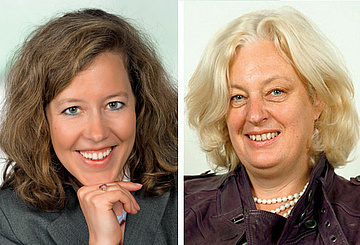
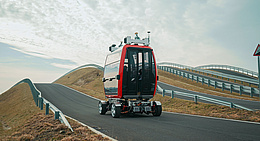
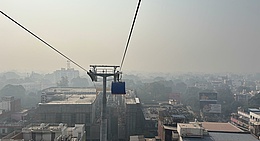
![[Translate to English:] (c) Doppelmayr](/fileadmin/_processed_/b/3/csm_85-ATW_Stechelberg-Muerren_Lauterbrunnen_CHE_001_6442c0520d.jpg)


